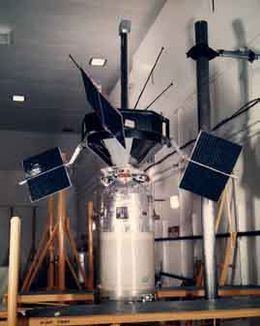Mission type Earth science Harvard designation 1962 Beta Gamma 1 Mission duration 10 months Inclination 42.8° Period 1.5 days Last contact 11 August 1963 | SATCAT no. 432 Launch date 2 October 1962 Inclination 42.8° Rocket Delta A | |
 | ||
Similar Explorer 11, Explorer 10, Explorer 17, Explorer 9, Explorer 8 | ||
Camp chef explorer 14 portable stove best outdoor stove review
Explorer 14 is a spin-stabilized, solar-cell-powered spacecraft instrumented to measure cosmic-ray particles, trapped particles, solar wind protons, and magnetospheric and interplanetary magnetic fields. A 16-channel PFM/PM time-division multiplexed telemeter was used. The time required to sample the 16 channels (one frame period) was 0.323 s. Half of the channels were used to convey eight-level digital information, and the others were used for analog information. During ground processing of the telemetered data, the analog information was digitized with an accuracy of 1/100 of full scale. One analog channel was subcommutated in a 16-frame-long pattern and was used to telemeter spacecraft temperatures, power system voltages, currents, etc. A digital solar aspect sensor measured the spin period and phase, digitized to 0.041 s, and the angle between the spin axis and sun direction to about 3-degree intervals.
Contents
- Camp chef explorer 14 portable stove best outdoor stove review
- Ksp episode 185 jool explorer 14 maiden voyage
- Experiments
- References
Ksp episode 185 jool explorer 14 maiden voyage
Experiments
There were eight experiments done on the Explorer 14 during its mission.
- Proton Analyzer
- Fluxgate Magnetometers
- Trapped Particle Radiation
- Cosmic Rays
- Proton-Electron Scintillation Detector
- Solar Aspect Sensor
- Electrolytic Timer Experiment
- Solar Cell Damage Experiment
